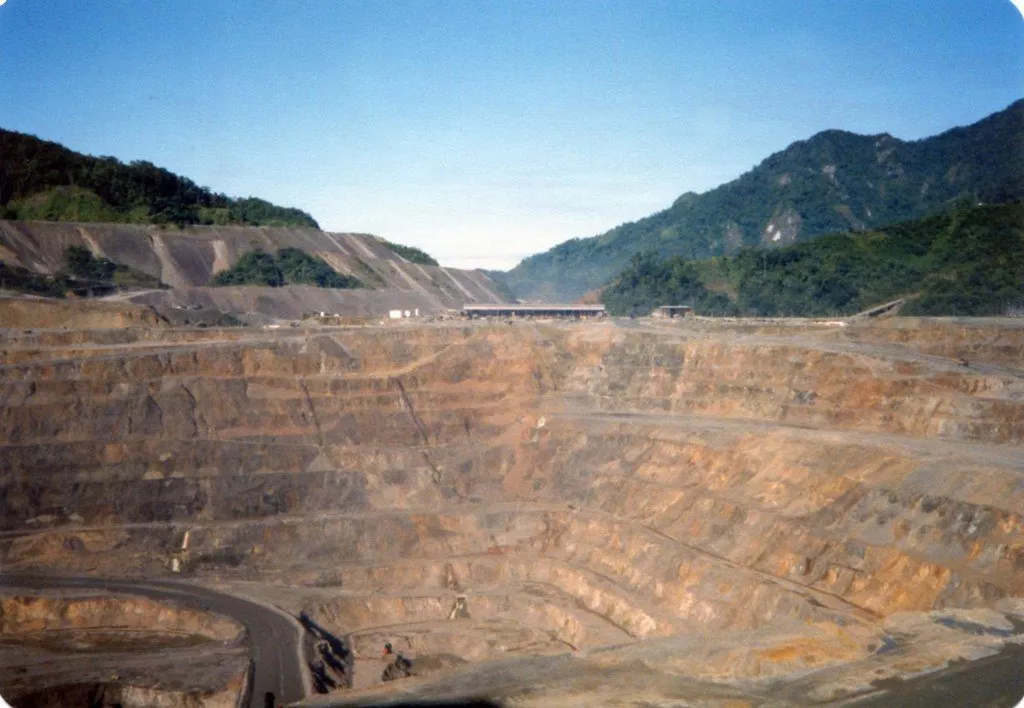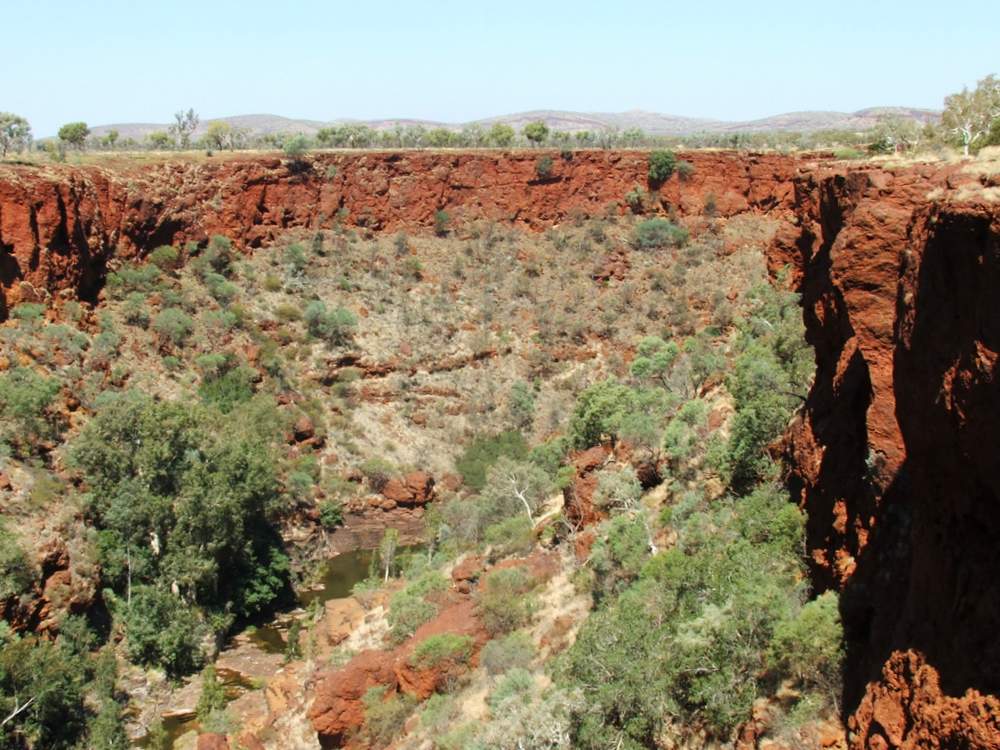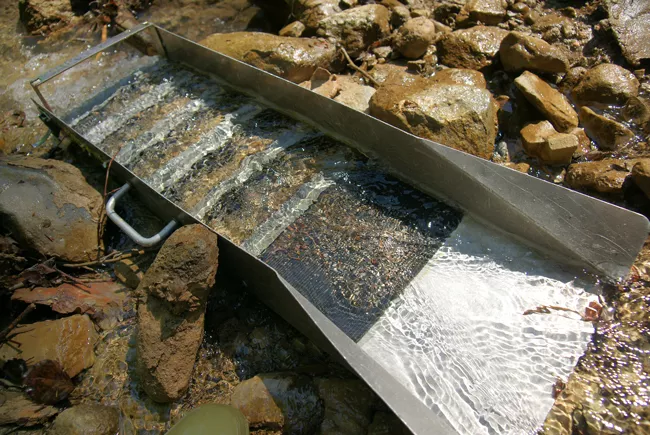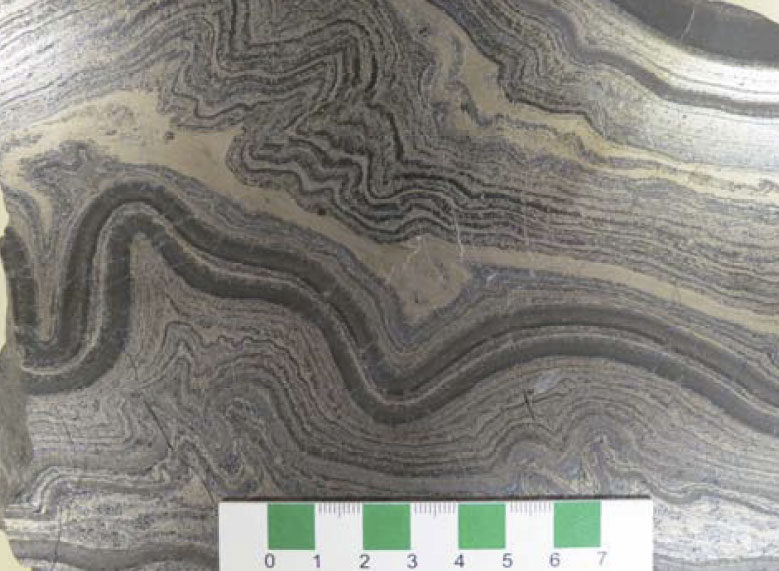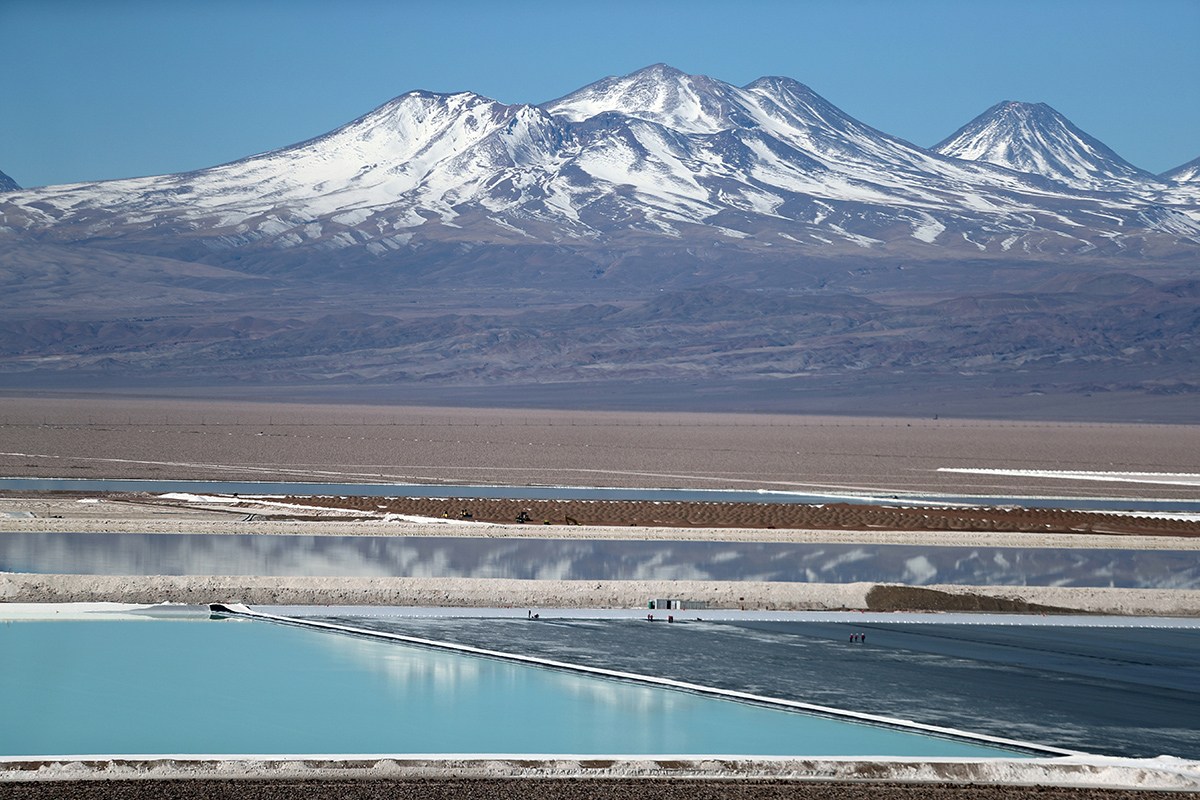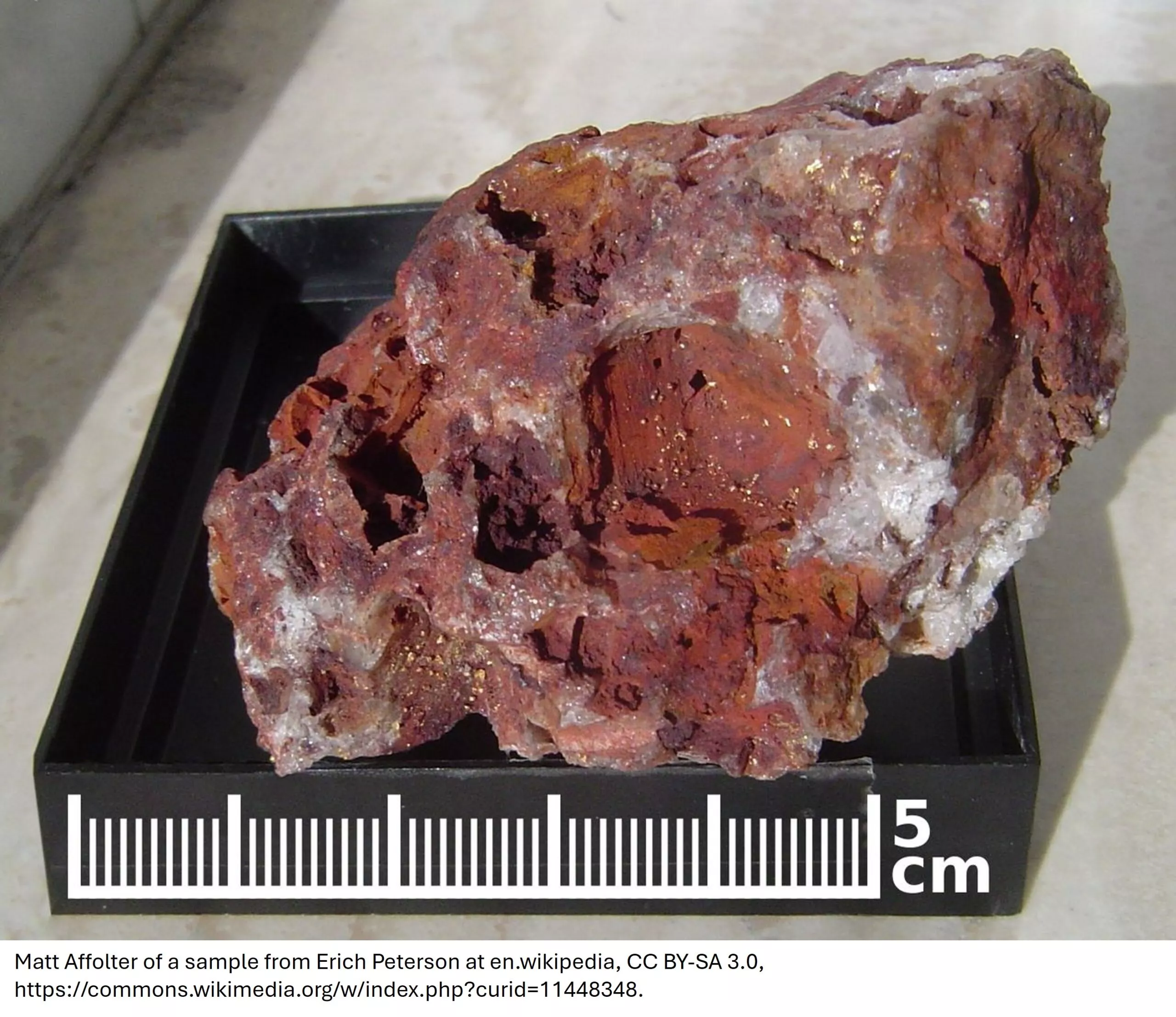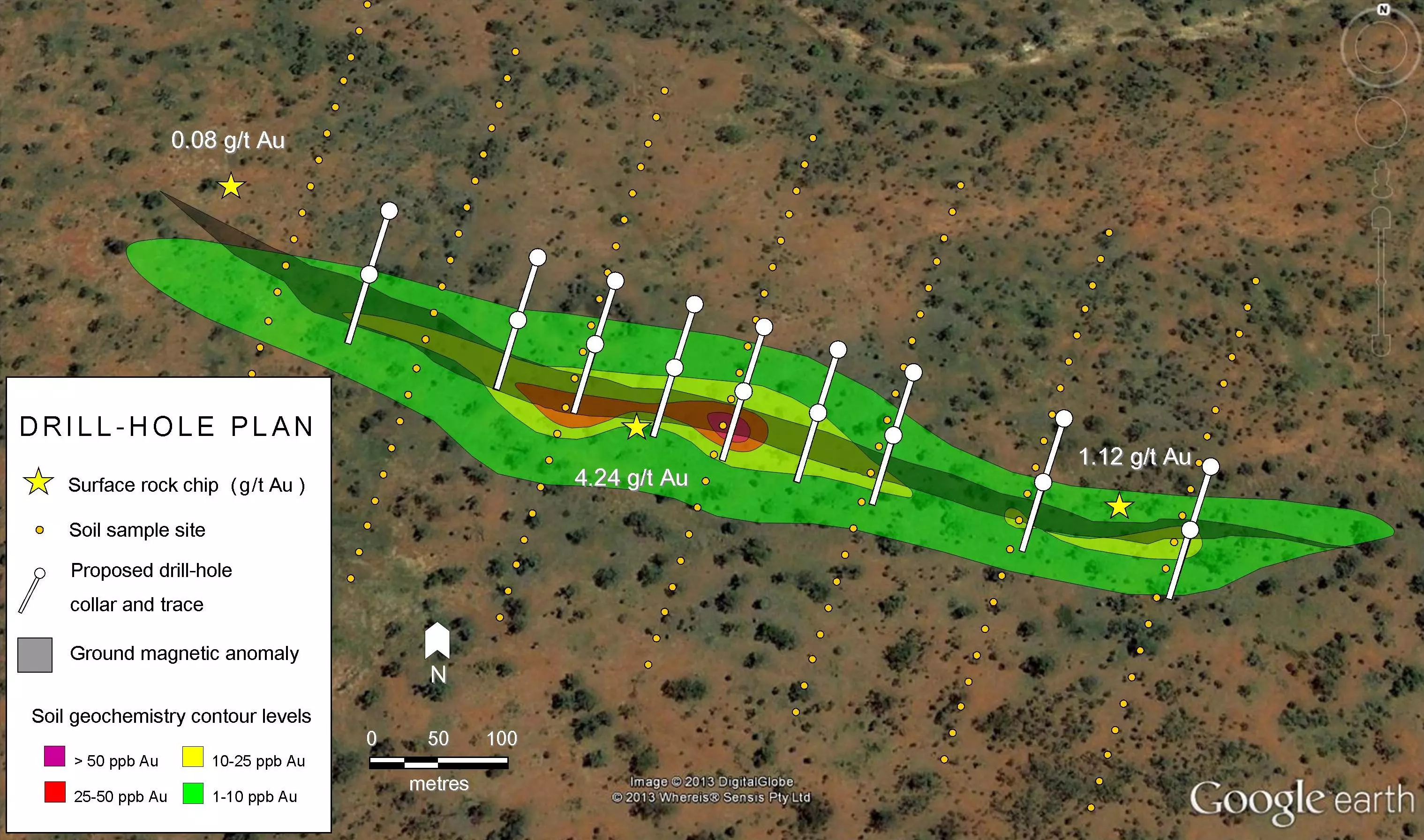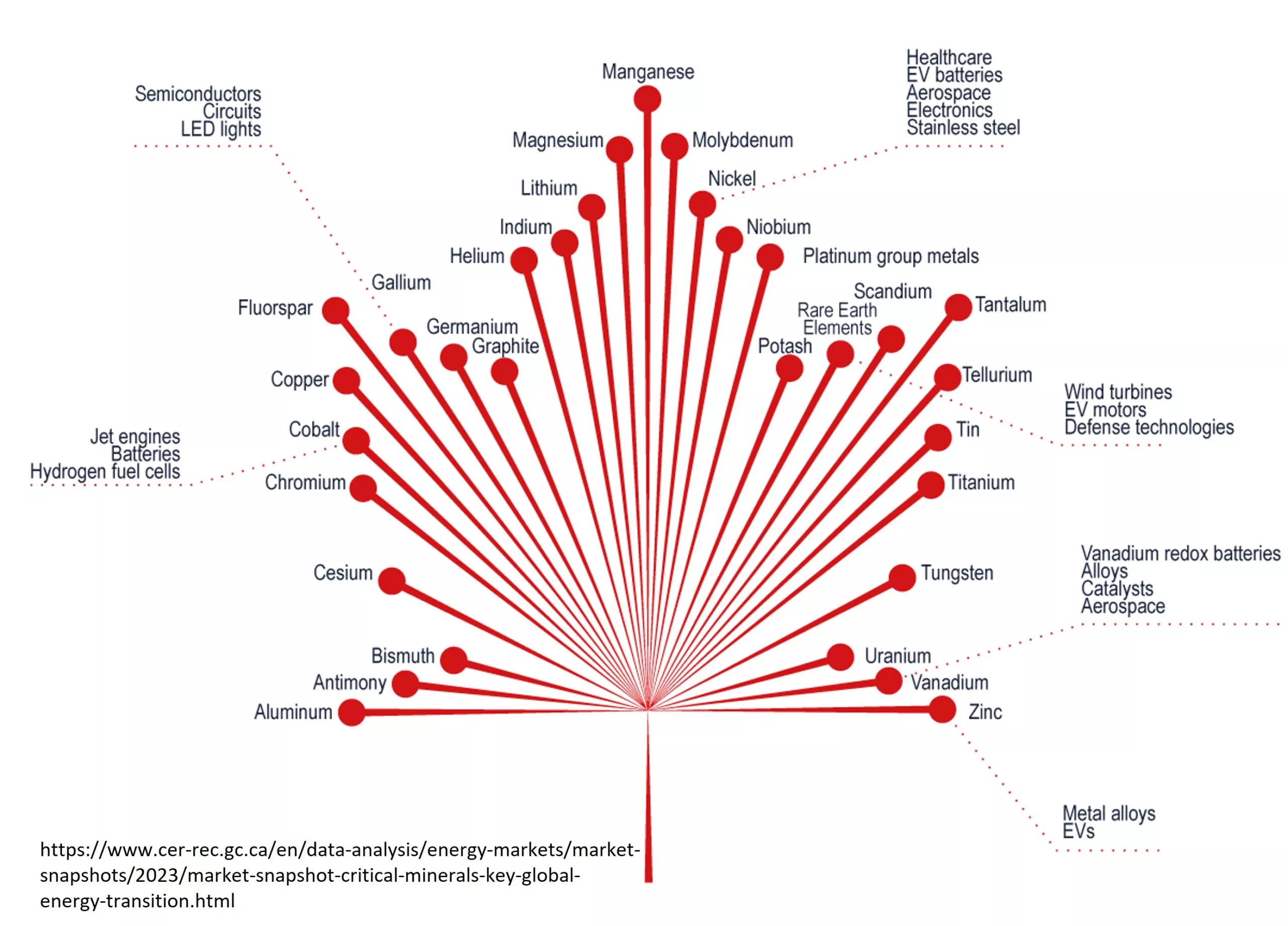Deposit models are the cornerstone of economic geology. They help us classify, understand, and find mineral deposits. Some deposits, however, have remained hard to classify, let alone understand or predict. Efforts to explain these unusual deposits have led to calls to define a whole new type of mineral deposit: Metasomatic Iron Alkali Calcic (MIAC). If correct, this idea may change how we think about some of the world’s largest iron (Fe), copper (Cu), gold (Au), and uranium (U) deposits.
What are MIAC Deposits?
The MIAC concept is so new the terminology hasn’t been settled, while MIAC seems to be the increasingly preferred term, others such as Iron Oxide Alkali Altered (IOAA) have also been used. Most deposit models, i.e. porphyry copper, are narrowly focused on certain styles of mineralization; MIAC, however, is a much broader term intended to include a variety of otherwise poorly understood deposit types such as Iron Oxide Copper Gold (IOCG), Iron Oxide Apatite (IOA), albite-hosted uranium, and potentially many others.
In general, MIAC refers to hydrothermal deposits with extensive alteration dominated by iron, alkali elements (mostly sodium and potassium), and calcium. The minerals most commonly associated include hematite and magnetite (iron), albite, amphibole, K-feldspar, biotite, and illite (alkali), and epidote and calc-silicate minerals (calcium). The main economic elements are Fe, Cu, Au, and U, but others including silver (Ag), cobalt (Co), rare Earth elements (REEs), and others may also be present.
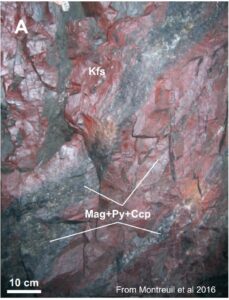
The MIAC concept grew out of attempts to explain the apparent link between IOCGs, such as the supergiant Olympic Dam Cu-Au-Ag-U deposit in Australia, and IOAs such as the Kiruna Fe deposit in Sweden. These types of deposit are often, although not always, found together, and are unusual in that Fe is mostly found as oxides, (hematite and magnetite) instead of sulfides like pyrite, and they often contain large amounts of the phosphate mineral apatite. Although the idea was very controversial at first, in recent years more and more studies suggest that these deposit types have a common origin: very hot Fe-rich fluids released from certain igneous intrusions.
At first, these fluids precipitate minerals like magnetite and apatite, forming IOA deposits, but as they rise through the crust they cool, mix with other fluids, and react with surrounding rocks until their chemistry changes to the point where they precipitate Cu ± Au, U, Ag, Co, and others to form an IOCG deposit. This also neatly explains the variability of IOCGs: since the fluids interact with their local environment and evolve so much it makes sense they wouldn’t all be identical.
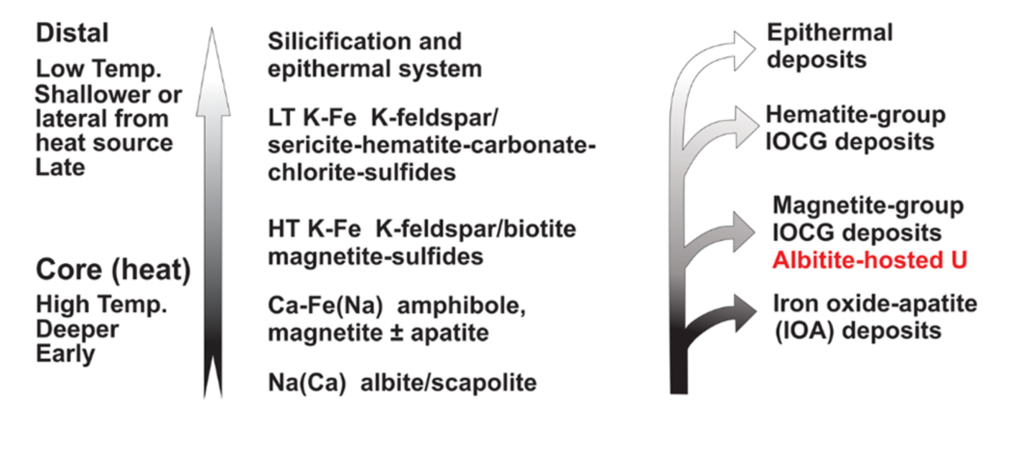
The idea isn’t entirely new; it’s generally accepted that the fluids released by intrusions may form Cu porphyries before cooling, mixing with surface-derived fluids, and eventually forming epithermal style deposits some distance away. The main difference between porphyry-epithermal systems and MIAC systems is fluid chemistry. Fluids in MIACs would contain more oxygen and volatile elements like fluorine. This means they may be very chemically aggressive and able to dissolve and replace large volumes of rock, thus allowing them to ‘steal’ elements from the surrounding rocks and form new deposits.
What Makes a MIAC?
Which deposits should and shouldn’t be included in the MIAC family is the subject of ongoing debate. In addition to IOCG and IOA deposits, albite-hosted U deposits are commonly included. These rather obscure low-grade (≤0.1%) U deposits are often found with IOCGs in districts such as the Cloncurry in Australia and the Great Bear Magmatic Zone in northern Canada. These deposits consist of a variety of U minerals dispersed in much larger (~10’s km) corridors of albitization, where rocks have been replaced by almost pure albite feldspar. How albite-hosted U deposits form has been difficult to explain in the past because while they appear to be of hydrothermal origin, the minerals within them often include elements such as thorium (Th), zirconium (Zr), and REEs which don’t typically form from fluids.
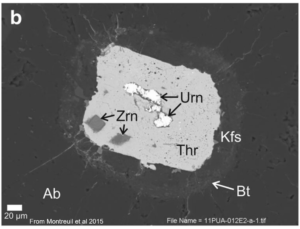
Once again, the MIAC model provides an answer. Early, hot fluids dissolve large volumes of rock and replace them with albite, while slightly later, fluorine-rich acidic fluids are just the thing to concentrate the small amounts of U, Th, Zr, and REEs in the original rocks into low-grade albitite deposits. If conditions are right, the fluid may evolve a little further to form IOCGs, explaining why IOCGs are almost always later than albite-hosted deposits in the same area. Even more evolved, post IOCG fluids, possibly mixed with other near-surface fluids, may have formed the late 5-element and epithermal style veins in the Great Bear district.
The MIAC model is flexible enough to include some of the world’s oddest deposits, such as Jaguar, an apatite-rich hydrothermal nickel deposit in Brazil. The deposit’s unusual mineral assemblage, combined with the fact that nickel doesn’t typically form hydrothermal deposits, makes it baffling from most perspectives, but could be explained as a rare type of IOA-IOCG deposit.
Some would take the MIAC model even further, suggesting even well understood deposit types like unconformity U and orogenic Au could in fact be different styles of MIAC mineralization. These proposals have yet to find much popular support. Part of the problem is that the flexibility of the MIAC concept makes it hard to draw hard lines about what does and doesn’t belong. MIAC systems can be quite complicated, with multiple stages of sometimes very different styles of alteration and mineralization involved. One, some, or all of these stages and styles may be present in an area, which may leave individual deposits and districts very different from each other.
A Bridge too Far?
Like most new scientific ideas, MIAC has received its share of skepticism. One major criticism is that the concept is overly broad. Viewed through the right lens many deposits could be interpreted as MIACs, raising questions to whether the classification is useful in the real world. Without hard-and-fast rules for using it the MIAC model could become a garbage bin for odd and poorly understood deposits that don’t actually have much in common.
The source of MIAC fluids is also controversial. Most IOCGs and IOAs appear to be linked to igneous activity, but others, as well as the albite corridors that sometimes precede them, may be linked to metamorphism. The sheer volume of Fe, alkalis, and calcium required to produce so much alteration is also hard to explain.
The fact that MIAC allows for fluids to evolve also raises questions about when a MIAC fluid ceases to be a MIAC and starts being something else. How much does it have to dilute, cool, and change in chemistry before it becomes an epithermal or basinal fluid, for instance? It’s an important question, but the answer may be uncomfortably ambiguous. While people like to classify deposits into neat boxes, that’s not how the Earth really works. One system may run into the next in ways that are obvious or subtle, and local conditions also play a role; no two deposits are ever truly the same.
Case Study: Is Kiggavik a MIAC?
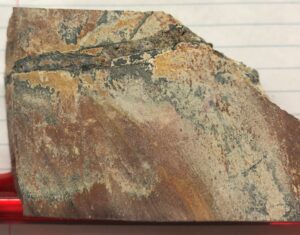
The Kiggavik deposits in central Nunavut, Canada, contain ~50 kt U at a grade of ~0.5%. Since discovery in the mid 1980’s they’ve generally been considered basement-hosted unconformity U deposits. New evidence, however, suggests a MIAC model may be a better fit.
The early phases of mineralization contain albite and have unusual U, Th, and Zr minerals similar to albite-hosted U deposits. This early phase is followed by extensive hematite and illite alteration, similar to both unconformity and IOCG deposits, with late U-rich epithermal veins which have textures and minerals in common with epithermal veins in the Great Bear district. Epithermal veins and albite alteration don’t make much sense in an unconformity model but are easily explained in a MIAC model. Leaching of U from unusually U-rich rocks in the area may explain Kiggavik’s relatively high U grade.
Geochronology dates the deposits to ~1.6-1.55 billion years old, the same time as igneous activity in the region, suggesting igneous-derived MIAC fluids could have been involved. This time is similar to unconformity U deposits in the Athabasca Basin hundreds of Km to the southwest, but also to a global pulse of MIAC activity, including IOCGs in the Olympic Dam district of Australia. While Australia is now very far from northern Canada, the areas were part of the same continent ~1.6 billion years ago, and IOCG activity appears to have continued into the Wernecke Breccias in the Yukon, Canada.
There seems to have been a lot of MIAC activity in northern Canada generally, with IOCG and albite hosted deposits in the Wernecke and Great Bear, and possibly further west in the Nonacho Basin and Kiggavik areas. These deposits, however, are too far apart in both space (100’s-1000’s Km) and time (100’s of millions of years) to be part of the same event. Many questions remain to be answered. As of yet, none of these known deposits have proved to be economically viable, perhaps a more complete understanding of MIAC systems can help point the way to bigger and better things?
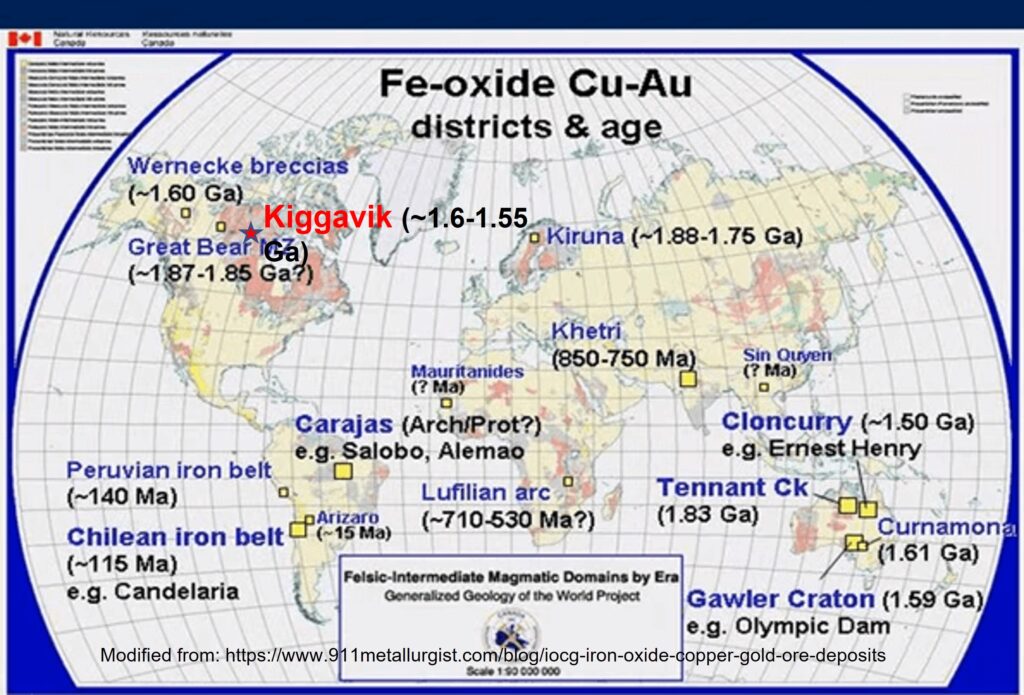
Applying a MIAC model to Kiggavik suggests that other elements found in MIACs, such as Cu and Au, could be present in the area. No one has seriously explored the area for anything besides unconformity U, but there have been hints of epithermal Au-Ag in the area. Could IOCG or other deposits have gone unnoticed? While unconformity deposits are found only in or very near sedimentary basins MIACs could be anywhere. Exploration methods also differ; radiometric and conductivity surveys used to find unconformity deposits may not spot IOCGs, for instance.
We may not get answers anytime soon. The claim’s current owner, Orano, is a specialist in unconformity U, and may not be interested undertaking the difficult and expensive task of revaluating the remote area.
Conclusion
The MIAC model is a new idea that promises to explain some of the world’s most unusual deposits. It may also provide a framework for understanding large scale links between different deposit types. The model is still poorly defined, however, and a great deal more work will need to be done before we know how correct, or useful, it will prove to be. For now, the MIAC model is probably best applied to IOCG, IOA, and possibly albite-hosted deposits, where the model seems to explain a genetic linkage.
Known MIAC deposits are clustered in Australia, parts of South America, and northern Canada, but others are likely to be discovered or reclassified if the model gains more widespread acceptance. If the MIAC model proves to be correct, and as flexible as some proponents believe, it may just change how we think about mineral deposits.
Companies Mentioned
- Orano https://www.orano.group/canada/en (website)
Further Reading
- Montreuil, J.-F., Corriveau, L., and Potter, E.G. (2015): Formation of albitite-hosted uranium within IOCG systems: the Southern Breccia, Great Bear magmatic zone, Northwest Territories, Canada. Miner Deposita: 50 293–325. (Academic article)
- Corriveau, L., Montreuil, J-F., and Potter, E.G. (2016): Alteration Facies Linkages Among Iron Oxide Copper-Gold, Iron Oxide-Apatite, and Affiliated Deposits in the Great Bear Magmatic Zone, Northwest Territories, Canada. Economic Geology, 111, 2045–2072. (Academic article)

